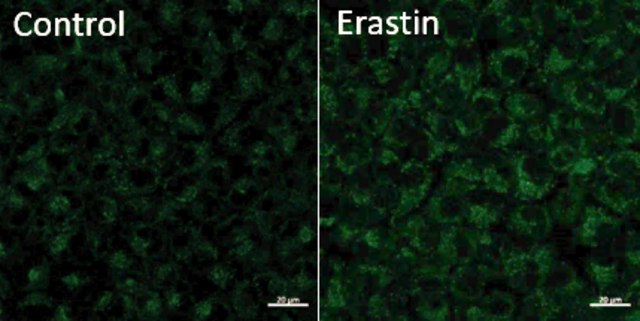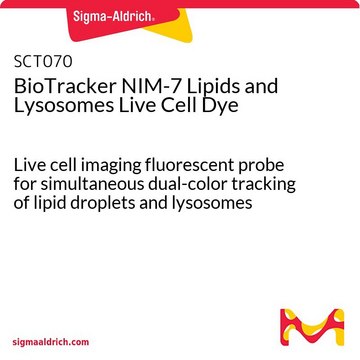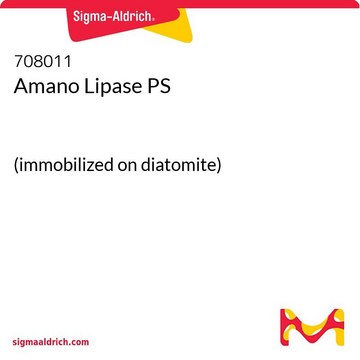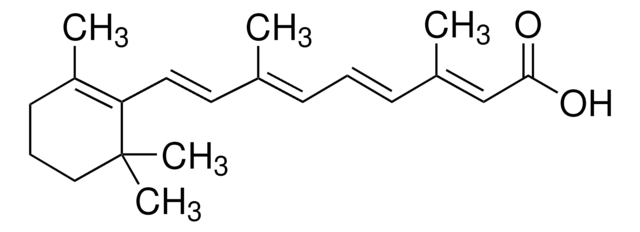SCT241
BioTracker™ LD-1 Near-IR Lipid Droplet Live Cell Probe
Synonym(s):
Lipid Droplet Live Cell Dye, Lipid Droplet Live Cell Probe, Lipid Droplet Probe, NIR Lipid Droplet Dye
About This Item
Recommended Products
packaging
vial of 1 mg
Quality Level
manufacturer/tradename
Millipore
technique(s)
cell culture | mammalian: suitable
flow cytometry: suitable
detection method
fluorometric
shipped in
dry ice
storage temp.
−20°C
General description
This LD-1 probe is chemically optimized for the low-polarity, high-viscosity microenvironment found in lipid droplets.
In contrast with Raman microscopy and transmission electron microscopy (TEM) fluorescent small molecule probes have been developed as promising tools for detecting LDs . Advantages of fluorescent LD probes include the capability for real-time and in vitro testing, plus excellent selectivity and sensitivity.
Spectral properties
Absorbance : 650 nm
Emission (max): 745 nm
Reference
Wu X, Wang X, Li Y, Kong F, Xu K, Li L, Tang B. 2022. A near-infrared probe for specific imaging of lipid droplets in living cells. Anal Chem. 94(11):4881–4888.
Application
Features and Benefits
Target description
Physical form
Storage and Stability
Legal Information
Disclaimer
Storage Class
11 - Combustible Solids
wgk_germany
WGK 3
flash_point_f
Not applicable
flash_point_c
Not applicable
Certificates of Analysis (COA)
Search for Certificates of Analysis (COA) by entering the products Lot/Batch Number. Lot and Batch Numbers can be found on a product’s label following the words ‘Lot’ or ‘Batch’.
Already Own This Product?
Find documentation for the products that you have recently purchased in the Document Library.
Our team of scientists has experience in all areas of research including Life Science, Material Science, Chemical Synthesis, Chromatography, Analytical and many others.
Contact Technical Service








